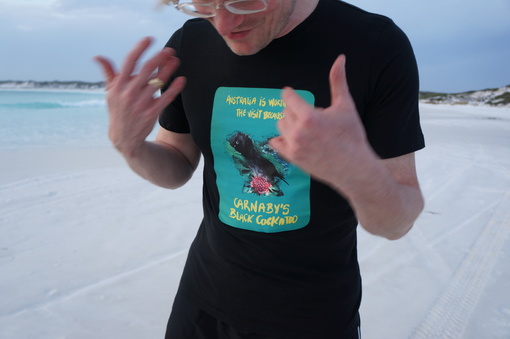Battle of Australia
2014
Designs for posters and other promotional articles celebrating endangered Australian animals.
Battle of Australia
Carl Linnaeus created a useful system of naming living organisms – in other words taxonomy. Australian nature is still widely unknown surprisingly even to those who live there now. In one or two centuries the Garden of Eden has become a home of an enormous mono-cultural wheat industry, goldmines and extremely fast disappearing biodiversity. Plants, animals, funghi etc. disappear already before they even were named, not to mention ever making it to general knowledge. On the contrary cats, foxes, rabbits etc. were purposefully brought in to root out the native fauna, which did not awake feelings of sympathy by the English colonialists. Battle of Australia tries to promote the beauty and the mere existence of those „last Mohicans“ of some species that are still here today but maybe gone tomorrow.
The research process to gain an idea and to get close to the selected list of species around the city of Esperance in Western Australia was both fascinating and heart-breaking. The land is heavily industrialized mainly by agriculture. Most of the year the wheat fields look like the biggest ever parking lots and are even less biodiverse. For the aesthetic pleasure of the human eye on each side of the road there is a green stripe of bushes where the last individuals of certain marsupials, birds, lizzards etc. try to scratch together a living. Needless to say: If they don’t die of hunger or thirst they will be hit by cars. The most likely way to meet any of these animals was through the empathetic women and men of a volunteering organisation called „Wildlife Rescuers and Rehabilitators“ who open their homes and give their time to recover the still living and injured animals.
In the case of Carnaby’s black cockatoo, it looks like there are still flocks of birds flying around – true, but sadly mostly all of the surviving hundreds are male. The female of the species died due to stress of lost habitat. Some farmers may still remember the grudge towards the birds coming in thousands and eating the grain. Carnaby’s black cockatoo, like many other species' problem, has to do also with the reputation and public image.
The Battle of Australia project uses artistic means leaning on to advertising in order to create a more attractive, cuter and easily accessible image of these animals (some don’t even have a proper name). It is an open source offering the designs for free for any organisation/person who is committed in the work of saving these or other Australian species and wishes to sell merchandize of any sort and use the profits for saving their natural habitats or otherwise the well-being of those animals.



















